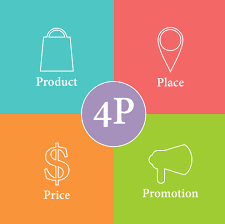We’ve all heard generalized statements about marketing being repeated as if they were “truths”. But many of these statements are actually myths that send an organization down the wrong path. Here are the three that seemed to be the biggest and baddest for a company.
Myth #1: “Targeting” Limits Growth Opportunities

Mathematics dictates that if you limit the number of customers you target, you will have fewer opportunities for success. Companies also think that if they have sales covering all accounts, then they shouldn’t limit themselves in any way.
Alternative thinking: There’s a phenomenon we call the magnetic effect of focus It refers to something magical that happens when you develop a powerful value proposition tailored to a specific segment. Highly-satisfied segment customers start talking to others—even to contacts at companies outside of their own segment! Even more magical, they are often willing to pay a higher price, or at least not challenge your value.
It happens in all industries: technology, pharmaceuticals, medical devices – even in the dental supply market. Focus, ironically, leads to growth.
Application: As an experiment, re-strategize and create a highly-tailored value proposition for one underserved, yet important, segment. While conducting business as usual with all other segments, pilot, execute and measure what happens with the targeted segment. If you execute well, you will not only see successes with this segment; segment members will refer you to others and you will see some wins outside of the target market.
Myth #2: SWOT Analysis is a key part of A Marketing Strategy

Client’s SWOT analysis—featuring long lists of strengths, weaknesses, opportunities, and threats—is usually a central part of a company’s strategic plan presentation. They often explain that the process they used for putting their SWOT together required several functions to get together and be thoughtful with each portion of the analysis. Because of the amount of effort used to develop it, leaders often believe that their SWOT is a good representation of the company’s capabilities and future potential.
Proactive companies then start allocating resources based on their “findings” from their SWOT. This is where the train really starts to go off the tracks.
Alternative thinking: The simple problem with SWOT is that the analysis usually doesn’t take into account customer needs. Furthermore, it doesn’t take into account your company’s strengths/weaknesses relative to customers’ other options. As a result, companies continue investing in their historical strengths, long past the point that customers care about them or that they are truly a point of difference. More customer-centric competitors proceed to rapidly steal market share.
Application: If you must continue to use SWOT, create a “Customer-Driven SWOT” (maybe called a CD-SWOT).
- SW – For the strengths and weaknesses (“SW”) section of SWOT, conduct a customer-needs analysis first. At the very least, only include a shortlist of strengths and weaknesses that matter to customers.
- OT – For the opportunities and threats (“OT”) section of SWOT, think about the impact on customers of emerging market trends and new potential competitors. Then develop this section from a customer-centric viewpoint.
In any case, once you have the customers’ perspective, it is a great idea to have several functions weigh in. This can then help align the organization and ensure that resources are allocated in the right areas for growth.
Myth #3: The 4Ps Are No Longer Relevant In A Digital Era

The 4Ps: Product, Place, Price, Promotion
Often the 4Ps are considered “old fashion and too simple”. There is also a belief that it should include people, services & digital (e.g., “5Ps, S&D”).
Alternative thinking: When it comes to the famous 4Ps of marketing—product, place, promotion, and price—we believe that the 4Ps are the foundation upon which all great marketing is built. They are still relevant in today’s’ world if they are developed in the context of the digital age.
For example, many products are now “smart” and marketers must strategize about what types of usage data to capture and make available in ways that users can benefit. B2B place strategies—detailing who to sell to and where—must take into account that decision-making power in almost every industry is shifting away from traditional influencers and more towards end-users.
Application: Start by asking yourself (or your team) about the 4Ps.
- Product: “Product” represents both products and services – it is the bundle of offerings that you may be providing. Companies often provide a combination of these two. For example, IBM has shifted its focus to primarily providing services with a few products.
- Price: Societal trends are forcing pricing strategists to consider more than just optimal price points—they have to design appropriate pricing models for their customers, such as subscription-based approaches or “freemium” offers.
- Place: Consider that this can be both physical and virtual, and there may be a range of places, depending on what stage of the buying cycle someone is in. For example, content strategy may include different information for someone in the “research” phase vs. the “consideration” stage.
- Promotion: In an environment where customers can easily talk to each other, promotional strategies become much more about educating, servicing, and being “reference-able” than they are about chest-thumping. This is where content strategy is important to consider.
As a “next step” in strategy, the execution plan must include people’s roles & responsibilities, deadlines, and metrics.
Myths In Your Company
We hope these myths—and alternatives—keep you from blindly following a path that is actually a dead end. Do these resonate with you? Are there other myths that your company follows without any basis in fact? If so, we would love to hear from you!

 Mary Abbazia
Mary Abbazia